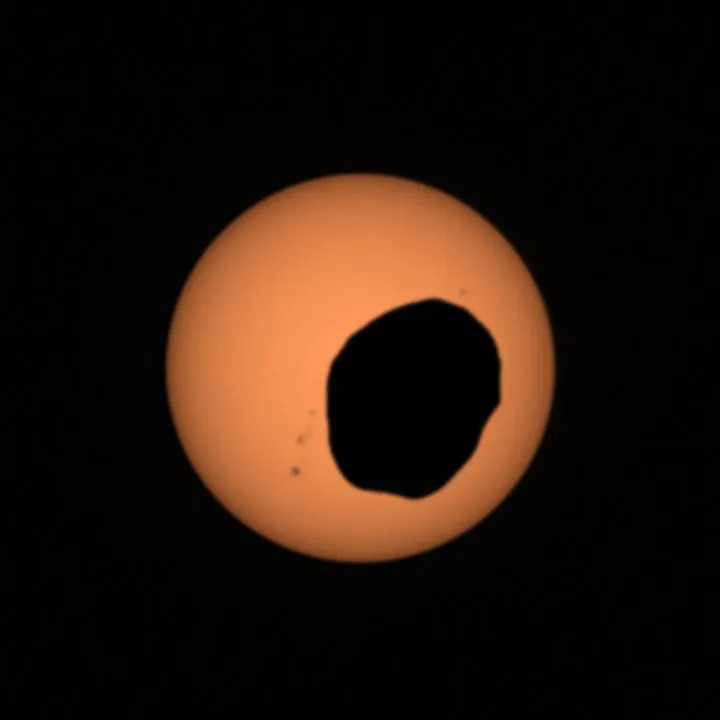This amazing image showing a bright disk with an odd-shaped silhouette is a solar eclipse on Mars, as seen by the NASA Perseverance rover.
Mars has two moons, Phobos and Deimos, and it's the former that's seen here passing in front of the Sun, creating the impression of a 'googly eye' in space.
The image was captured by the rover’s Mastcam-Z instrument on 30 September 2024, the 1,285th Martian day of its mission.
Perseverance launched from Earth on 30 July 2020 and landed on Mars on 18 February 2021 in Jezero Crater.

Phobos transits on Mars

Phobos and Deimos are named after the Greek words for 'fear' and 'dread', respectively, and their names come from Greek mythology.
Phobos is about 157 times smaller in diameter than Earth’s Moon, and just 27 kilometres (17 miles) at its widest point.
This Phobos transit occurred as the moon passed between the Sun and Mars, from the perspective of the rover's location on the Red Planet.

Phobos orbits Mars nearly exactly in line with Mars's equator and close to the planet’s surface, so these transits happen most days of the Martian year.
But any would-be eclipse chasers on Mars have to be quick: Phobos's rapid orbit of just 7.6 hours means a transit of Phobos lasts about 30 seconds.
Images of transits like these enable planetary scientists to learn more about Phobos's orbit around Mars, and for good reason.
The moon is getting closer to Mars and is predicted to crash into the Red Planet in about 50 million years.
